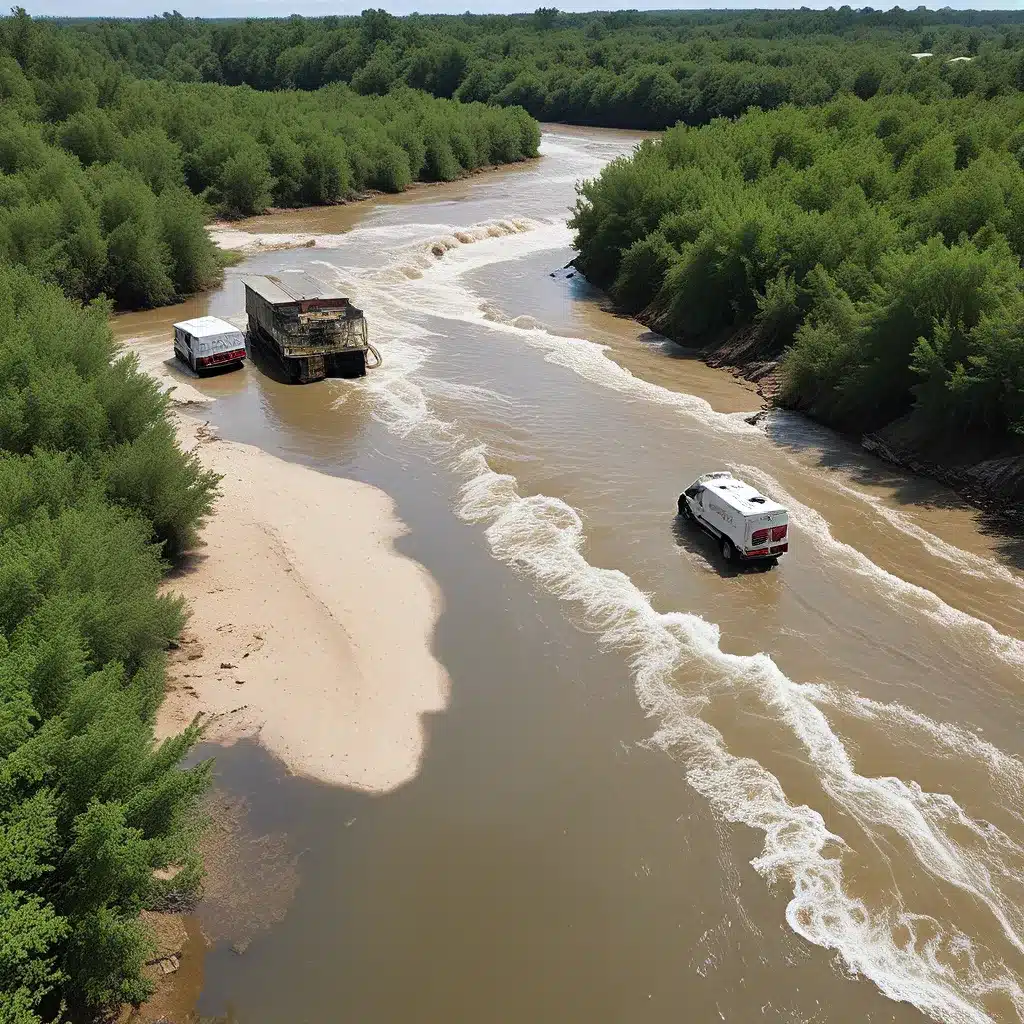
Treading the Murky Depths of Environmental Emergencies
Picture this: You’re out on a weekend sailing trip, enjoying the salty breeze and the sun-dappled waves. Suddenly, dark clouds gather overhead, and the once-tranquil waters start to churn. A storm is brewing, and you realize you’re heading straight into uncharted territory. This is where the real adventure begins.
As a matter of fact, that’s precisely the situation we find ourselves in when it comes to environmental challenges and the need for emergency water solutions. The waters are indeed uncharted, and the stakes couldn’t be higher. But fear not, my fellow explorers – I’m here to guide you through this treacherous journey, armed with the knowledge and insights that could mean the difference between smooth sailing and a shipwreck.
Weathering the Storm: Addressing Environmental Emergencies
In the face of environmental crises, such as natural disasters, pollution incidents, or infrastructure failures, the need for reliable and adaptable water solutions becomes paramount. These events can disrupt the delicate balance of our water resources, leaving communities high and dry (pun intended) and in desperate need of immediate assistance.
Recent research has highlighted the growing importance of emergency water solutions, particularly in the context of sustainable development. As our planet faces the increasingly unpredictable effects of climate change, the demand for innovative approaches to water management has never been more pressing.
But where do we even begin? Well, my friends, it’s time to dive in and explore the uncharted waters of emergency water solutions.
Navigating the Choppy Seas of Water Emergencies
When it comes to water emergencies, the challenges can be as diverse as the environments in which they occur. From contamination incidents to natural disasters that disrupt infrastructure, the solutions required must be as adaptable and resilient as the problems they aim to solve.
One of the key considerations in addressing these emergencies is the need for rapid deployment and scalability. When every second counts, having access to emergency water treatment systems that can be quickly transported and set up on-site can mean the difference between life and death.
Imagine a scenario where a major chemical spill has polluted a community’s water supply. In such a crisis, traditional water treatment methods may be rendered useless, and the affected population could face an imminent health crisis. Enter the power of portable water purification systems. These compact, self-contained units can be rapidly deployed to the affected area, providing clean, safe drinking water within a matter of hours.
Similarly, when natural disasters strike and infrastructure is damaged, the ability to quickly establish temporary water distribution networks becomes essential. Mobile water treatment plants and transportable pipelines can be deployed to bypass broken or inaccessible water mains, ensuring that communities have access to the vital resource they need to survive and recover.
Unlocking the Potential of Sustainable Water Solutions
But emergency water solutions are not just about addressing immediate crises. They also play a crucial role in building long-term resilience and sustainability. By incorporating renewable energy and innovative treatment technologies into the equation, we can create water solutions that not only meet the demands of the present but also safeguard the future.
Imagine a scenario where a remote village is cut off from its main water supply due to a landslide. Instead of relying on costly and carbon-intensive diesel generators to power a temporary treatment plant, what if we could harness the power of the sun or the wind to provide a reliable and environmentally friendly source of energy?
Exploring uncharted waters in this context means embracing the latest advancements in renewable energy and water treatment technology. Solar-powered desalination units, for example, can transform brackish or seawater into potable supplies, offering a sustainable solution to communities facing freshwater scarcity.
Charting a Course for the Future
As we navigate these uncharted waters, it’s important to remember that the solutions we seek are not just about addressing the immediate crisis at hand. They’re about building a more resilient and sustainable future for our planet and its precious water resources.
By investing in the development and deployment of cutting-edge emergency water solutions, we can not only respond to environmental emergencies with greater speed and efficiency but also lay the groundwork for a more water-secure tomorrow. These solutions represent the vanguard of a new era in water management, one where technology, sustainability, and human ingenuity converge to tackle the most pressing challenges of our time.
So, let’s embark on this adventure together, my fellow explorers. Let’s navigate the choppy seas of environmental crises, armed with the tools and knowledge to weather any storm. And who knows – perhaps, in the process, we’ll discover uncharted waters that hold the key to a more resilient and sustainable future for all.
After all, as the saying goes, the journey of a thousand miles begins with a single step. And in this case, that first step might just be the one that leads us to the promised land of clean, reliable, and environmentally responsible water solutions.
Let’s get started, shall we? The waters are waiting.


